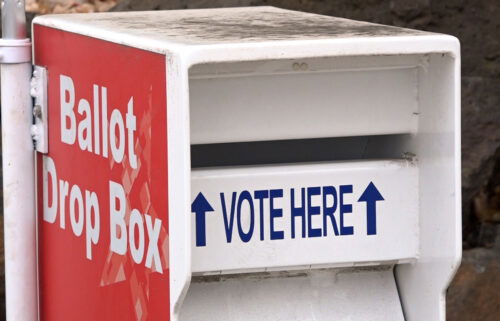
Three Individuals Charged With Hate Crimes for Vandalizing Residences of Brooklyn Museum Executives

### Brooklyn Museum Leaders Targeted in Alleged Hate Crime: Charges Filed Against Three Suspects
Three individuals have been formally charged with “making a terroristic threat as a hate crime” after allegedly defacing and vandalizing the homes of Brooklyn Museum leaders earlier this year. According to a statement from Brooklyn District Attorney Eric Gonzalez, the graffiti marked a troubling escalation in anti-Zionist rhetoric tied to heated protests against the museum’s affiliations and funding sources linked to Israel’s military.
The incident has sparked concerns about the overlap among organized activism, hate speech, and antisemitism, particularly in the realm of the arts.
#### The Vandalism Incident
On June 12, red graffiti with anti-Zionist messages was splashed across the homes of four high-ranking Brooklyn Museum officials: Director Anne Pasternak, Board Chair Barbara Vogelstein, Board Treasurer Neil Simpkins, and President and Chief Operating Officer Kimberly Panicek Trueblood. Red triangles, a symbol that has associations with Hamas and appears in Palestinian flag iconography, were drawn on the windows of these properties, further heightening the tensions.
The graffiti came just two weeks after a heated protest at the Brooklyn Museum. The May 31 pro-Palestinian march sparked outrage after a heavy police presence was attributed to museum security, although the museum had denied that it requested such police intervention. The protesters had called for the museum to divest from donors associated with investments in the Israeli military.
In an anonymous statement shared with *Hyperallergic*, a group taking responsibility for the graffiti claimed it was a response to the museum’s “complicity in genocide,” criticizing the institution’s response to the protest and alleging links between its donors and Israeli military ventures.
The vandalism initially drew accusations of antisemitism from both local and national sources. Reports, including one from *The New York Times*, mistakenly identified all the defaced properties as belonging to Jewish individuals. However, only Anne Pasternak is Jewish, a fact clarified in later corrections. DA Gonzalez’s statement underscored that the individuals involved allegedly targeted officials with “Jewish-sounding names,” further complicating the situation.
#### The Accused and Evidence
The defendants include 36-year-old Gabriel Schubiner and 32-year-old Samuel Seligson from Brooklyn, and 28-year-old Taylor Pelton from Queens. These individuals were identified through surveillance footage, which captured their movements around the affected residences in the early hours of June 12. A crucial piece of evidence came from a fingerprint found on a stencil used during the vandalism, which linked Schubiner to the crime.
Additionally, Gonzalez noted that the group of six people—three of whom remain unidentified—were captured on security cameras carrying black bags believed to contain spray paint and other supplies, as well as traveling in the same vehicle near the defaced homes.
Pelton and Seligson were arrested in July and August, respectively, but Seligson’s involvement in the case led to some controversy, particularly from civil rights groups concerned with freedom of expression. Originally, Seligson had been charged for allegedly filming others committing the act of vandalism. A later indictment expanded the charges against him, alleging that he directed the group to place the “supplies” into a vehicle later identified in security footage.
#### Responses and Broader Implications
In a case already heavy with polemical overtones, DA Gonzalez emphasized that while the vandalism was overtly anti-Zionist in tone, the suspects specifically targeted Jewish-sounding names, which brought the specter of antisemitic motives into sharp focus.
There has been little clarity from the New York City Police Department (NYPD) about the subsequent developments of the investigation, and the Brooklyn Museum has, so far, refrained from issuing any additional statements beyond earlier public denouncements of police violence following the May 31 protest.
The vandalism incident and the ensuing legal charges also raise significant questions about the role of protest in the art world, especially as it intersects with broader geopolitical struggles. Museums, particularly ones like the Brooklyn Museum, have found themselves pushed more deeply into political controversies, a situation further complicated when issues around art touch on global conflicts like those in Israel and Palestine.
Meanwhile, individuals involved in social movements that advocate for political change often walk a fine line between legitimate protest and actions that may be prosecuted as crimes, as seen in this case. The charges of “terroristic threat” carry a particularly weighty connotation, further inserting the case into debates around free speech, activism, and hate crimes.
Despite the legal proceedings, the larger debate surrounding the relationship between cultural institutions and political engagement, especially around donors tied to contentious industries or nation-states, remains unresolved. Incidents like this continue to force institutions like the Brooklyn Museum to redefine their place in these public debates, and how they engage with politically charged activism.
As of now, the three defendants face multiple charges, including vandalism as a hate crime,